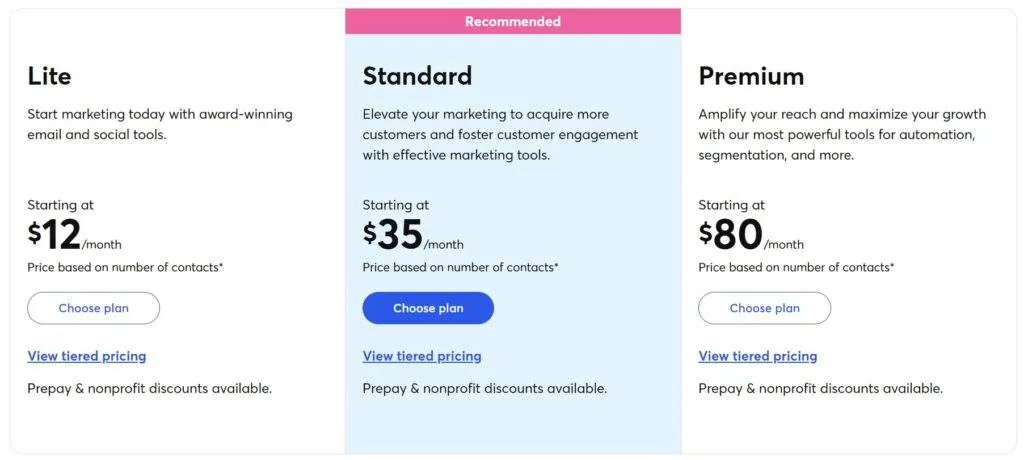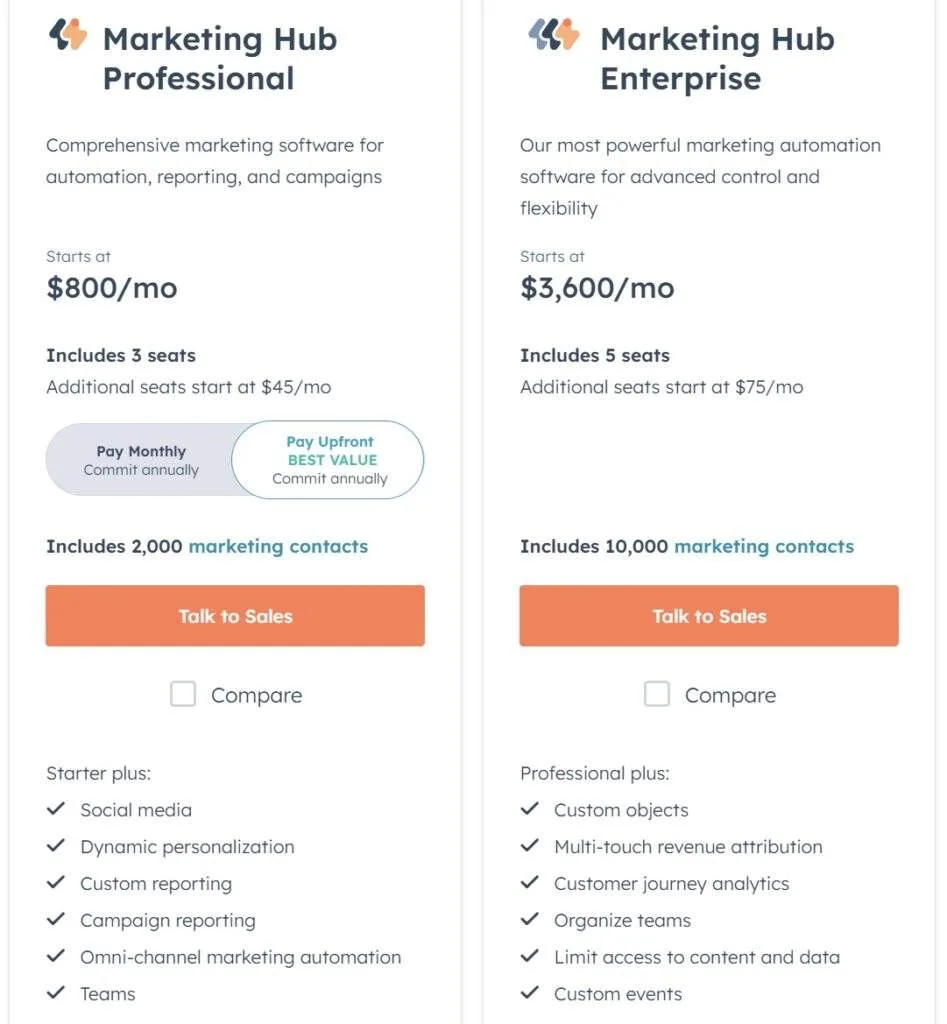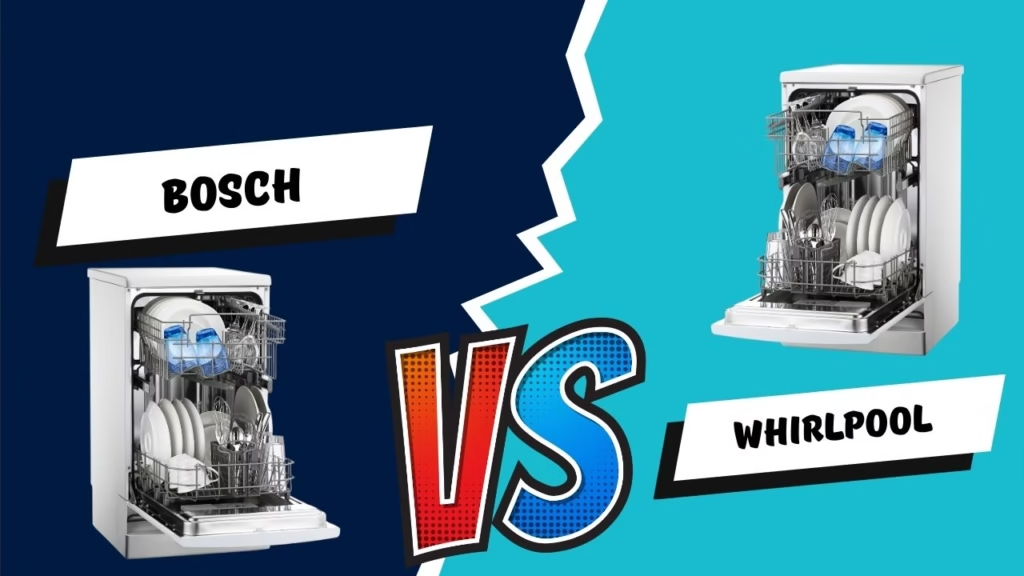Comparing Constant Contact vs HubSpot? This in-depth guide evaluates the two email marketing tools across pricing, features, integrations and more to help you decide which platform is the best fit for your business needs and goals.
Constant Contact vs Hubspot 2024 – Which is the Best Email Marketing?
Table of Contents
Introduction
Constant Contact vs HubSpot – these are two of the most popular email marketing tools on the market today. But which one is the right choice for your business? Email remains an incredibly effective marketing channel, but there are a multitude of platforms to choose from. Cutting through the clutter to find the best fit can be a challenging task.
That’s why in this post, we’ll do a deep dive comparison of Constant Contact and HubSpot. We’ll look at their core email marketing capabilities, additional functionality, pricing, ease-of-use, integration options, and more. By the end, you’ll have a clear understanding of the key differences to decide which platform better aligns with your marketing and sales needs.
Both Constant Contact and HubSpot are hugely powerful and reputable services. Constant Contact has been a go-to email marketing solution for over 20 years, primarily focused on that core capability. HubSpot is a more comprehensive customer relationship management (CRM) platform that also includes robust email tools alongside its sales, marketing, and service clouds.
Picking the right solution is critical, as email marketing remains a phenomenally high ROI channel. Campaign Monitor found that for every 1 spent on email marketing, the average return is 36. With statistics like that, investing in the optimal email platform can pay huge dividends. Our goal is to make sure you end up with the best fit for your organization’s needs.
Quick Comparison of Constant Contact vs Hubspot
If you’re solely looking for an email marketing tool, Constant Contact is likely the better choice. It’s more affordable, straightforward to use, and lets you build robust email campaigns, automation sequences, and manage your contact lists effectively. However, it lacks broader marketing, sales, and CRM capabilities.
On the other hand, HubSpot is the ideal pick if you want an all-in-one platform to run your entire inbound marketing and sales operations. In addition to email marketing features on par with Constant Contact, HubSpot provides a comprehensive CRM, sales pipeline, lead management, analytics, advertising, SEO, and much more. But it comes at a higher price point.
For businesses just focused on nailing their email strategy, Constant Contact’s simplicity and value likley make it the wiser option. But if you need a full marketing/sales stack with email as one component, HubSpot’s broader feature set justifies the added investment. Evaluate your current requirements and future needs to decide which solution better positions you for success.
Features
When it comes to comparing the core features of Constant Contact and HubSpot’s email marketing tools, there are some key similarities and differences to note:
Both platforms provide drag-and-drop email builders with a library of mobile-responsive templates to choose from. They also offer similar capabilities around list segmentation, contact management, automation workflows, A/B testing, analytics and reporting. However, HubSpot’s email tools are part of a broader marketing hub that includes additional capabilities like lead generation, marketing automation, SEO recommendations, advertising tools, and more interdepartmental alignment.
Constant Contact is more singularly focused on email marketing as its core offering. This streamlined approach may make its email tools slightly more intuitive for basic use cases. But HubSpot’s emails can tap into richer CRM data and integrate with its extended suite of marketing and sales features. Additionally, HubSpot touts higher deliverability rates and more robust options for dynamic content personalization.
So while both provide solid foundational email marketing features, Constant Contact takes a best-of-breed email approach, whereas HubSpot prioritizes combining email with its full marketing/sales/service ecosystem. Evaluating your current and future channel needs will guide which toolset better aligns with your goals.
Email Marketing Capabilities
When it comes to evaluating the core email marketing capabilities of Constant Contact vs HubSpot, both platforms pack a ton of powerful features:
Email Builders & Templates Both provide intuitive drag-and-drop email builders to create beautifully designed emails, along with extensive libraries of mobile-responsive templates. Constant Contact has around 200+ templates, while HubSpot offers slightly more at 300+.
Contact Management & Segmentation
Effective list segmentation is crucial for personalized email marketing. Both tools allow you to build segmented lists based on contact properties, behaviors, email engagement and more. HubSpot provides additional advanced features like predictive lead scoring.
Automation & Workflows Email automation sequences are where these platforms really shine. Constant Contact and HubSpot both empower you to create complex, multi-branch automated workflows triggered by specific conditions and actions.
A/B Testing Want to optimize email send times, subject lines, content and more? Both Constant Contact and HubSpot offer A/B testing capabilities to systematically try out variations and see what resonates best.
Reporting & Analytics Get deep insights into key email metrics like opens, clicks, unsubscribes and more. Constant Contact has comprehensive reporting dashboards, while HubSpot ties email performance into broader marketing metrics.
In terms of pure email marketing firepower, both Constant Contact and HubSpot bring tremendous functionality to the table. However, HubSpot does gain an edge when it comes to more advanced capabilities like:
- Dynamic content personalization using CRM data
- AI-powered send time optimization
- Integration with HubSpot’s free CRM database
- Account-based marketing tools
So while Constant Contact covers the vast majority of email marketing essentials, HubSpot packs in a few extra innovative features by tying emails directly into its broader martech ecosystem. But for teams just focused on winning with email, either platform provides a stellar array of tools.
You May Also Like: Glowing Elfsight Reviews
Additional Functionality
Beyond core email marketing capabilities, there are some key differences in additional functionality when evaluating Constant Contact vs HubSpot:
Customer Relationship Management (CRM) HubSpot includes a robust free CRM at the center of its platform. This allows you to manage your entire contact database, track interactions, pipeline deals, get deep insights – all tied into your marketing efforts. Constant Contact has more limited CRM capabilities.
Sales Tools Building on the CRM, HubSpot’s Sales Hub adds powerful tools like email tracking, meeting scheduling, live chat, quotes, pipeline management and more. This tight sales/marketing alignment is lacking in Constant Contact.
Service & Website Tools HubSpot also offers separate “hubs” for customer service case management as well as content management for building websites/blogs. Constant Contact is focused solely on marketing/email.
Analytics & Reporting
While both provide email metrics, HubSpot’s analytical capabilities extend across your entire marketing, sales and service funnels with AI-powered insights. Constant Contact is limited to basic email reporting.
Marketing Automation Both platforms enable marketing automation workflows triggered by customer behaviors. However, HubSpot can leverage richer data from its CRM and additional tools for more advanced segmentation and personalization.
In summary, Constant Contact is a dedicated, best-of-breed email marketing and basic automation tool. HubSpot takes a vastly more comprehensive approach by combining robust email capabilities with an entire suite of integrated sales, marketing, service and operations tools.
This makes HubSpot exponentially more powerful for companies wanting a centralized platform to run their entire revenue engine. But it also adds considerable cost and complexity compared to Constant Contact’s simplicity. Evaluate which approach best aligns with your business goals and needs.
You May Also Like: ClickFunnels vs Shopify: Unleash Your Sales Potential
Integrations
When it comes to integrating with other apps and platforms, both Constant Contact and HubSpot offer robust integration capabilities – but with some key differences:
Constant Contact Integrations While focused primarily on email marketing, Constant Contact does integrate with a range of third-party tools including:
• E-commerce platforms like Shopify, WooCommerce, BigCommerce • Payment processors like PayPal, Stripe • Social media scheduling tools • Online survey/form builders • CRM and marketing automation platforms • Website builders and content management systems
This allows you to sync your customer data, capture leads, share content seamlessly across channels, and create relatively integrated marketing campaigns all connected to your email efforts.
HubSpot Integrations
As an all-in-one marketing/sales/service solution, HubSpot has one of the largest integration ecosystems around. Their App Marketplace includes over 500 out-of-the-box integrations across categories like:
• CRM and helpdesk platforms • Marketing automation tools • Social media and advertising • Sales productivity and telephony • Ecommerce and payments • Business operations and analytics
HubSpot’s open APIs and developer resources also facilitate building custom integrations as needed.
The key advantage of HubSpot’s vast integration network is being able to create a seamlessly connected tech stack for your entire customer experience delivery. All your marketing, sales, and service tools can interface with the HubSpot hub.
Constant Contact certainly provides integrated functionality for running email marketing campaigns across channels. But HubSpot’s extensive integration capabilities allow for optimizing and automating your entire business operations and customer cycle on a single platform.
So for companies looking to simply connect their core email efforts to other sales and marketing tools, either platform can work well. But if you need a command center unifying your entire revenue operations tech stack, HubSpot provides unmatched versatility in that regard.
Personal Experience
With Constant Contact, I appreciated the straightforward simplicity of their email builder and automation workflow tools. Creating solid looking emails and mapping out drip campaigns was very intuitive with their user-friendly interfaces. Their contact management capabilities were also robust for things like list segmentation and removal of inactive subscribers.
However, I did find Constant Contact’s singular focus to be limiting at times. If I wanted to design a more complex, multi-channel campaign that extended beyond just email, I had to pull in separate tools. There was no seamless integration with things like lead scoring, CRM data enrichment, advertising platforms, etc. It worked great for straightforward email needs, but lacked the connectivity for sophisticated inbound strategies.
HubSpot, on the other hand, showed its power when taking a broader marketing and sales approach. Their email tools were just as capable as Constant Contact’s for execution. But the ability to leverage the same core contact database across all their hubs (marketing, sales, service) made an integrated, omnichannel workflow far more achievable. Everything from initial lead capture, to email nurturing, to CRM pipeline management lived cohesively on a single platform.
The tradeoff was that HubSpot’s ecosystem did have a steeper learning curve than Constant Contact’s more purpose-built simplicity. And of course, the added functionality came at a higher subscription price point. But for teams looking to get maximize alignment and ROI across their entire customer experience efforts, HubSpot’s advanced connectivity was a huge advantage in my experience.
Pricing
When comparing Constant Contact vs HubSpot for pricing and available plans, there are some stark differences to take into account:
Constant Contact takes a more streamlined, email marketing-focused approach to their pricing tiers. They offer two main paid plans – Core and Plus – billed at a flat rate based on the size of your contact list. The Core plan starts at 9.99/month for 0-500 contacts, while the Plus plan is 45/month for the same 0-500 range.

As you move up in contacts, the pricing scales accordingly. For example, 10,001-15,000 contacts would be 195/month on Core or 335/month on Plus. The higher-tier Plus plan adds features like email automations, dynamic content, surveys, and more.
HubSpot’s pricing model is more complex since it covers an entire suite of marketing, sales, and customer service tools, with email marketing being one component. They don’t offer list-based pricing. Instead, their four main hubs – Marketing, Sales, Service, and CMS – each have a separate tiered subscription fee.
For the Marketing Hub which contains features like email, ads, analytics and more, pricing starts at 45/month for their “Starter” plan. But this only gives you core marketing tools with no email automation. To unlock those capabilities, you’d need their “Professional” tier at 800/month. Their top-tier “Enterprise” plan runs $3,200/month.

The benefit of the higher HubSpot pricing is getting a full marketing/sales/service stack on one platform. But for smaller businesses solely looking for a robust email solution, Constant Contact provides significantly more value at lower price points. Assessing which features your business truly needs will determine if HubSpot’s premium is worthwhile over Constant Contact’s email-focused bundles.
Pros & Cons
When weighing Constant Contact vs HubSpot, it’s important to understand the pros and cons of each platform:
Constant Contact Pros: • Affordable pricing, especially for small businesses and nonprofits • Simple user interface makes it easy to quickly build emails, lists, and automations • Robust email marketing tools like drag-and-drop editors, templates, list segmentation • Strong deliverability rates and statistical reporting • Integrates with e-commerce platforms like Shopify and WooCommerce
Constant Contact Cons:
• Limited functionality outside of core email marketing capabilities • Can become expensive for large contact lists over 10,000 subscribers • Lacks advanced functionality like CRM, lead scoring, advertising tools • Less suitable for complex, multi-channel marketing campaigns
HubSpot Pros: • All-in-one platform with tools for marketing, sales, service, and website management • Powerful CRM and customer data management • Marketing automation, lead nurturing, and AI-powered analytics • Scalable as your business grows with multiple pricing tiers • Deep integration and alignment between marketing and sales
HubSpot Cons: • Significantly higher pricing, especially for more robust tiers
• Steeper learning curve compared to Constant Contact’s simplicity • Email marketing may feel secondary to HubSpot’s broader sales/marketing focus • Less intuitive email builder and template management
The decision between Constant Contact versus HubSpot really comes down to your business’s needs and budget. Constant Contact wins for ease-of-use and affordability if core email capabilities are the priority. But HubSpot provides unmatched scalability and integration if you need a comprehensive marketing, sales, and CRM solution – albeit at a premium price point.
Alternatives
When considering alternatives to Constant Contact vs HubSpot, there are several other email marketing and CRM platforms worth evaluating:
For businesses primarily focused on email marketing like Constant Contact, other options include:
Mailchimp – One of the most popular email tools, known for an intuitive interface and generous free plan for beginners. Lacks advanced functionality.
ActiveCampaign – More affordable than HubSpot with extra sales/CRM capabilities beyond basic email marketing features.
Sendinblue – Simple yet robust all-in-one platform for email, SMS, chat, CRM and marketing automation.
ConvertKit – Designed specifically for creators/bloggers with easy user experience and advanced automations.
If you need a more full-featured solution comparable to HubSpot’s ecosystem, some key alternatives are:
Keap / Infusionsoft – Combines advanced email marketing automation with CRM, e-commerce, and sales pipeline tools.
ActiveCampaign (higher tiers) – In addition to email marketing, offers integrated CRM, sales automation, and messaging across multiple channels.
Zoho – Provides a comprehensive suite of business apps including email, CRM, marketing automation, analytics, and more.
When evaluating Constant Contact vs HubSpot or other options, core considerations are pricing and available features matching your goals. Lower cost per-email platforms like Constant Contact provide great basic email tools, while fuller CRM/marketing suites like HubSpot offer more cross-channel capabilities – but at a premium.
Ultimately, map out your business requirements in detail to determine if an email-focused or all-in-one solution best meets your current and longer-term needs. Taking the time for this assessment upfront leads to the right platform fit.
Other Relevant Categories
When comparing Constant Contact vs HubSpot, there are a few other key categories worth evaluating beyond just core email marketing features and pricing:
Ease of Use This is an area where Constant Contact tends to have an advantage. Their interface is very intuitive and streamlined for things like building emails, managing lists, and setting up basic automations. The learning curve is fairly minimal.
HubSpot’s UI is plenty modern and well-designed, but has more complexity given the breadth of its sales, marketing, and service tools. Simple tasks like email creation may require slightly more steps to navigate the layers of functionality. There’s a higher ramp-up period.
Integrations Both platforms integrate with a wide range of third-party apps and data sources. However, HubSpot’s open ecosystem provides more pre-built, native integrations with major CRMs, business intelligence tools, advertising platforms, webinar softwares, and more.
Constant Contact’s key integrations cover areas like e-commerce, social media management, and online survey/form platforms. But HubSpot’s versatility across an entire organization gives it more connection points.
Reporting & Analytics For companies focused solely on monitoring email performance metrics like opens, clicks, unsubscribes etc., Constant Contact’s reporting capabilities are robust.
But HubSpot blows those analytics capabilities wide open by combining data across an entire marketing/sales cycle. You can track every customer touchpoint and lifecycle stage in granular detail to continually optimize your processes.
Ultimately, while both Constant Contact and HubSpot have their strengths, HubSpot provides a more robust, centralized base of operations for complex, multi-channel marketing efforts built around sales enablement. Constant Contact remains a “best-of-breed” solution for straightforward email marketing needs.
Conclusion: Who is the winner
In the battle of Constant Contact vs HubSpot, there is no definitive “winner” – the ideal choice comes down to your specific business needs and priorities.
If email marketing is your sole or primary focus, Constant Contact emerges as the superior option. Its straightforward interface, affordable pricing (especially for smaller contact lists), and robust email building and automation capabilities make it an excellent dedicated email solution.
Constant Contact’s simplicity allows teams to get up and running quickly on things like creating campaigns, segmenting lists, and measuring performance metrics without a huge learning curve. And its integrations with e-commerce, surveys, and other marketing tools provide a fair amount of added functionality.
However, companies looking for a true all-in-one marketing, sales, and customer service platform will find HubSpot to be the more comprehensive choice over Constant Contact. While pricier, HubSpot’s suite of hubs and interconnected tools create unmatched operational efficiency.
The ability to manage the entire customer lifecycle from lead generation ads and email nurturing, all the way through to sales pipeline analytics and customer support – with data flowing throughout – is incredibly powerful. HubSpot’s network of native integrations also amplifies its connectivity across your business tech stack.
So for companies hyper-focused on nailing their email marketing initiatives, Constant Contact provides powerful yet easy-to-use tools at a great value. But for those wanting an integrated revenue operations engine alongside email capabilities, HubSpot’s end-to-end solution justifies the added investment.
Take an honest assessment of your current requirements and future growth plans. If your marketing efforts will remain singularly email-centric, Constant Contact is the clear winner. But if you need a multi-channel command center, HubSpot pulls ahead as the more robust all-in-one platform.

























